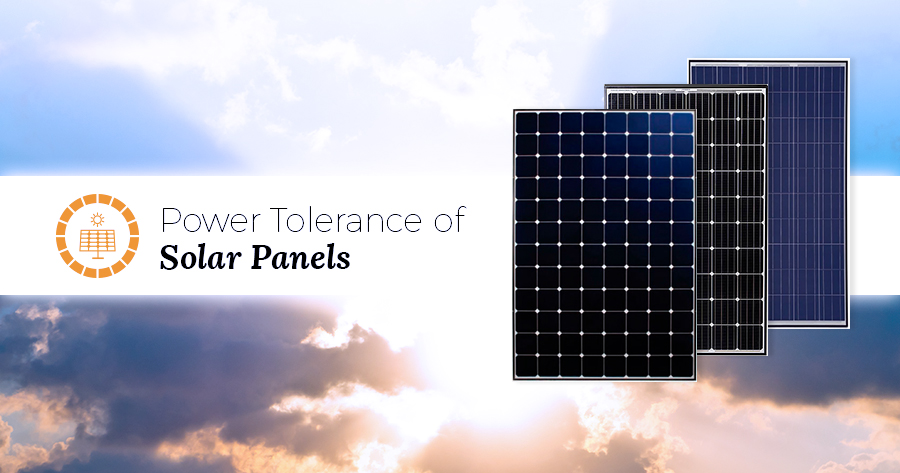Power Tolerance of Solar Panels Explained

Your Solar Panel’s Spec Sheet
From Tier 1 panels to high-efficiency modules, it can be confusing figuring out what really makes a solar panel high quality. Thankfully, an easy way to get around the marketing fluff is to simply take a look at a panel’s spec sheet.
While it may seem intimidating at first, there are really only four pieces of data you need to take notice of (the rest of the information is there for the electrician installing your panels):
- Power Tolerance
- Max Power at STC
- Max Power at NOCT
- Module Efficiency
Solar Panel Power Tolerance Explained
This blog will analyse the significance of Power Tolerance, and why you should be taking it into consideration when choosing your solar panel brand.
Power Tolerance is the actual range a module can deviate from its specified STC Max Power. STC stands for Standard Test Conditions, and refers to the lab conditions panels are tested under (1000W per square meter of sunlight).
For example, if a 220W panel has a Power Tolerance of -10% / +10%, the panel could have an actual Max Power of anywhere between 198 and 242W.
As the technology behind solar panels continues to advance, it’s becoming more common for panels to have a 0% or 0W negative power tolerance. This means the solar panel will always have a rated STC Max Power equal or greater than what’s been specified.
Solar Panels at Infinite Energy
SunPower E20 - 327W Module
SunPower is Infinite Energy’s premium solar panel brand, in addition to being used by NASA for their space crafts and rover explorers. SunPower’s E20 Module Series boasts high performance and excellent durability, generating more energy per square foot than any other module available, as well as producing 31% more power per panel.
Their 327W module has a Power Tolerance of -0 / +5%, meaning a module’s actual STC Max Power could fall anywhere between 327 to 343W.
WINAICO WSP-310M6 PERC Module
A leading manufacturer of high-quality, high-performance PV modules, WINAICO is a global PV Powerhouse. Their WSP-310M6 PERC Module was recognised as a Top Solar Panel Product in 2015 and the highest power 60-cell monocrystalline PERC module in the world by Solar Power World, a leading online and print resource for solar in North America.
The award-winning module has a Power Tolerance of -0 / +5W meaning the module’s actual Maximum Power could fluctuate anywhere between 310 to 315W.
WINAICO WST-280P6 PERC Module
WINAICO’s WST-280P6 PERC Module not only exceeds the IEC standard three times over, but also delivers 99% elative efficiency in weak light.
The module is rated with a Power Tolerance of -0 / +5W, guaranteeing the module’s Max Power at 280 to 285W.
Canadian Solar CS6K-260|265|270|275W Modules
A world leading solar panel manufacturer, Canadian Solar have become renowned due to the superior performance and reliability of their products. With excellent cell efficiency of up to 18.8%, Canadian Solar’s CS6K Modules deliver outstanding low irradiance performance, and IP67 Junction Box for long-term weather endurance.
All modules in the CS6K Series have a power tolerance of -0 / +5W, creating the following ranges:
- 260 to 265W (260W Panel)
- 265 to 270W (265W Panel)
- 270 to 275W (270W Panel)
- 275 to 280W (275W Panel)
The Bottom Line
To ensure your panels perform as expected, Infinite Energy recommends only considering panels with a 0% or 0W negative power tolerance. This will ensure your panel’s rated STC max power will always be equal or greater than what’s specified, guaranteeing you value for money.
There are many factors to consider when choosing your solar panel brand, and your panel’s spec sheet is a great place to start. For help deciphering your spec sheet, or to learn more about solar for your home or business, give Infinite Energy a call on 1300 074 669, or click here.


